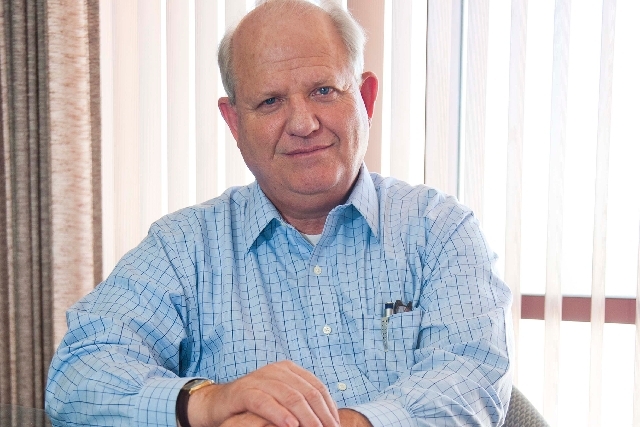As he exits, aviation chief recalls past, imagines future

For much of Randall Walker’s 23-year career in the Clark County Aviation Department, including 16 as director, growth seemed to be an entitlement.
The Strip’s moguls kept building larger and larger, while airlines gladly scheduled more planes into McCarran International Airport to support occupancy rates way above the national average and push room rates ever upward.
But Walker glided into retirement June 3, and the picture looks much different for his successor, Rosemary Vassiliadis.
“Seat capacity will be up 1.5 (percent) to 2 percent over the next six months and I think that’s the best we can expect for a while,” Walker said. “It’s going to be slow and we are going to rely on international.”
By contrast, the annual passenger counts from 2002-2007 grew anywhere from 3.1 percent to 13.2 percent once people got used to travel again after the Sept. 11, 2001, terrorist attacks.
At current expansion rates, it could take the better part of a decade to equal the 2007 peak of 47.7 million people that either flew in or out of McCarran.
Recession, particularly as a byproduct of the soaring fuel prices in 2008, then “capacity discipline,” airlines holding down flight schedules to boost fares, made their marks.
US Airways’ decision to pull down the hub that predecessor America West developed and then continue cutting flights hugely influenced McCarran’s numbers, Walker said in an interview. About half of US Airways passengers just changed planes and never left McCarran, he said.
US Airways’ strategy change may have inflicted only limited damage to the Las Vegas visitor industry. Yet it has dinged McCarran by reducing landing fees and gate fees paid by the airline and the percentage of sales McCarran collects from people who bought souvenirs or meals or played the slot machines during layovers.
Recruiting efforts by Walker and his staff have kept international traffic growing, principally as Canada’s WestJet has bolstered its schedule. But international amounts to less than 10 percent of domestic, so the gains have only partially offset domestic torpor.
When asked where in the airport he would place a plaque with his name on it — he denied any such ambitions — Walker gave a seemingly surprising answer. It would not be on either Concourse D or Terminal 3, the two most visible projects built during his tenure, but on McCarran’s technology backbone.
“I am most proud of our technology that has driven the efficiency for all of our gates,” he said. “I don’t know where you would put a plaque for technology. I could stick it in a servers closet and my (information technology) guys would see it every once in a while.”
He recalls the free Wi-Fi Internet connections that went live in January 2005 with particular fondness.
“Nothing we have ever done has brought us better customer satisfaction than free Wi-Fi,” he said. “We got more write-ups in national and international magazines about that. I received more complimentary emails from customers saying, ‘This is so wonderful, can you convince everyone to do it?’ ”
Several vendors, he recalled, approached him with Wi-Fi proposals that would charge patrons near $15 for a half hour, far too pricey for Walker’s taste. Then, Samuel Ingalls, McCarran’s information systems head, and his crew figured out that installing a free system covering about 95 percent of the terminals would cost only about $75,000, given the extensive wiring already in place. Liking the numbers, Walker gave the go-ahead.
Since then, the department has put more money into the system. But signing sponsors has made the Wi-Fi an approximately break-even operation. Walker counts McCarran as the second airport overall and the first big one to go that route; many others have since followed. Free-fi, in the industry lexicon, has surpassed fee-fi.
While he was partial to bits and bytes, Walker worked to see all of McCarran’s operations firsthand. When he had rare spare minutes, he would sometimes work the information booth. When Terminal 3 had its open house before the first flights, he handed brochures to the public.
“I learned a long time ago as a manager that you learn the best stuff working down in the trenches,” he said.
On one occasion where he pulled a full shift as a janitor, he found that the seats placed in the gate waiting areas were difficult and time-consuming to clean. Despite the aesthetic merits of a seat with grooves in the cover and a pad slightly recessed from the metal frame, he said, “They were miserable to clean. So we went back to the designer (Zoeftig) and said, ‘No more grooves and not more cracks around the edges where gunk can collect.’ ”
Despite initial resistance, the company ultimately made the changes to satisfy McCarran, then its largest customers.
At a trade show a few months later, a Zoeftig representative pulled Walker aside to show him a new product.
With a smile, Walker recalled the salesman saying, “See these pads? We call these the McCarran pads.”












